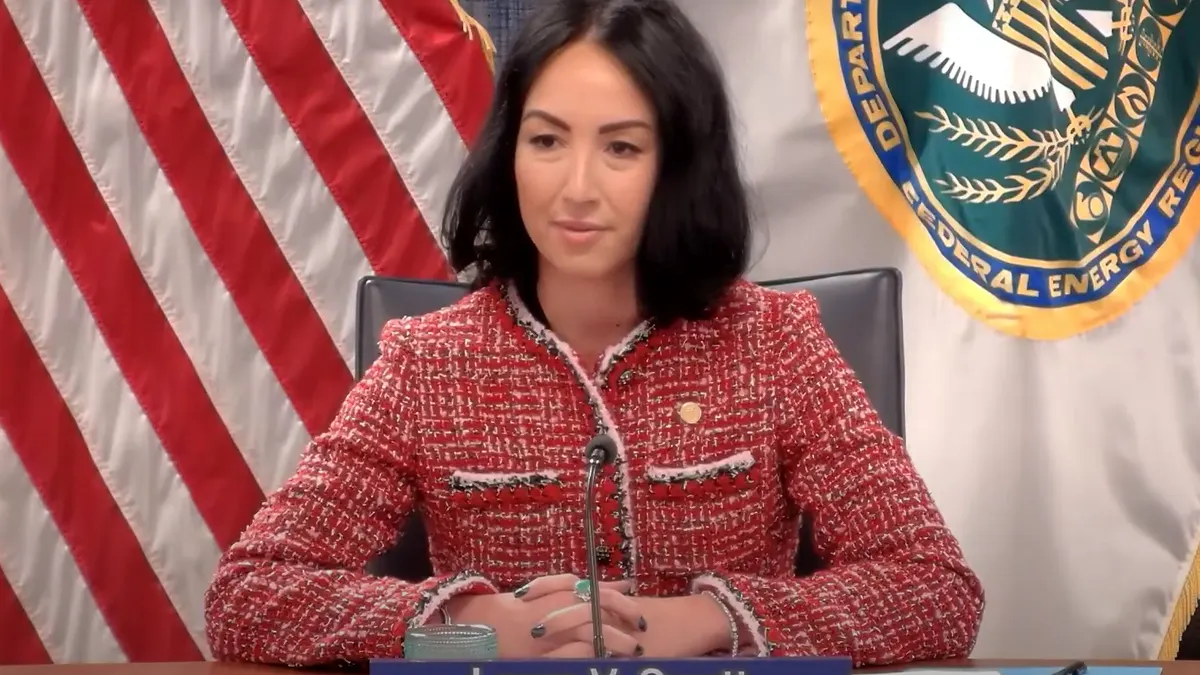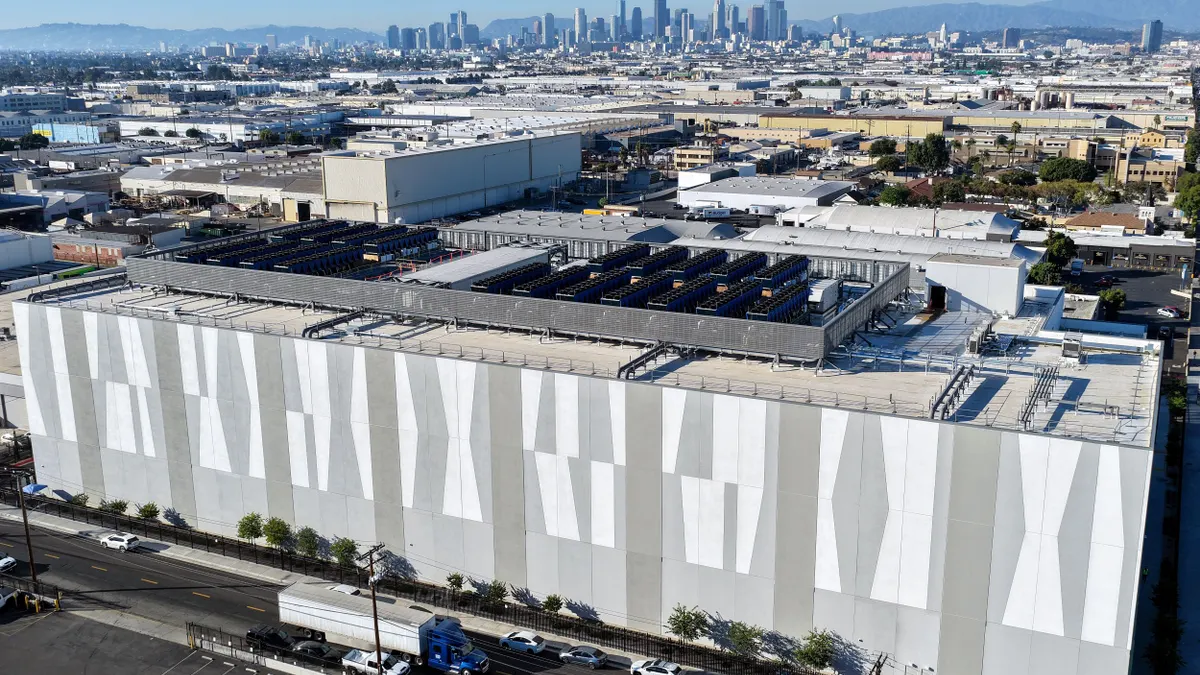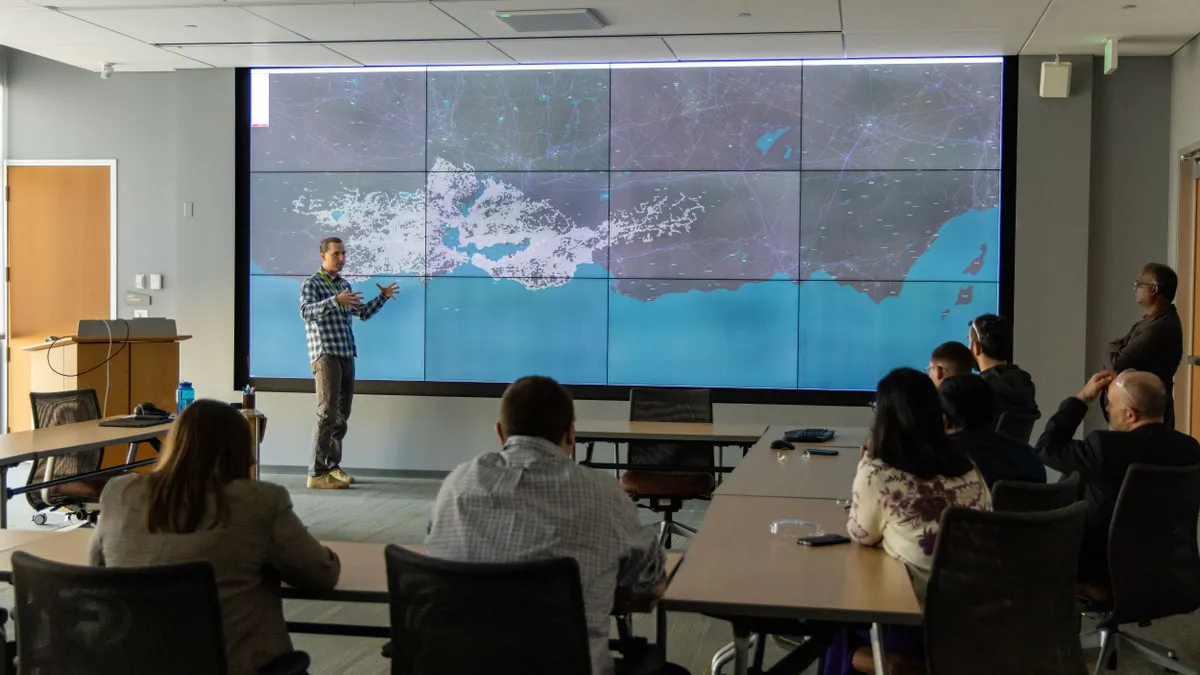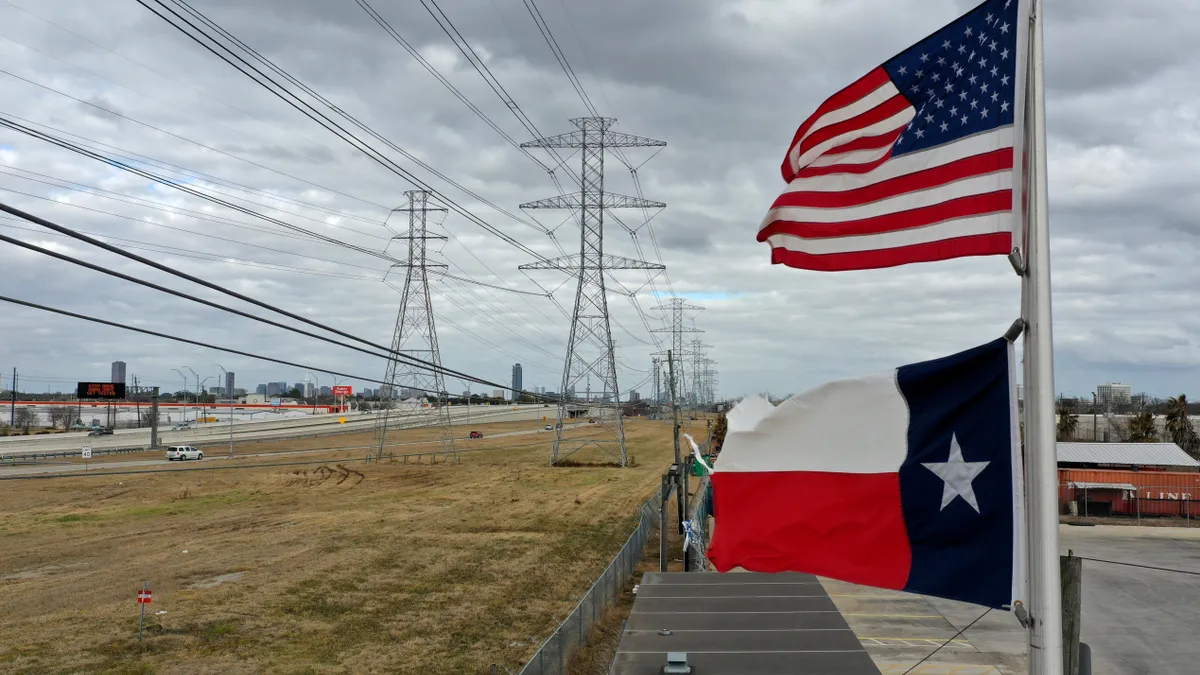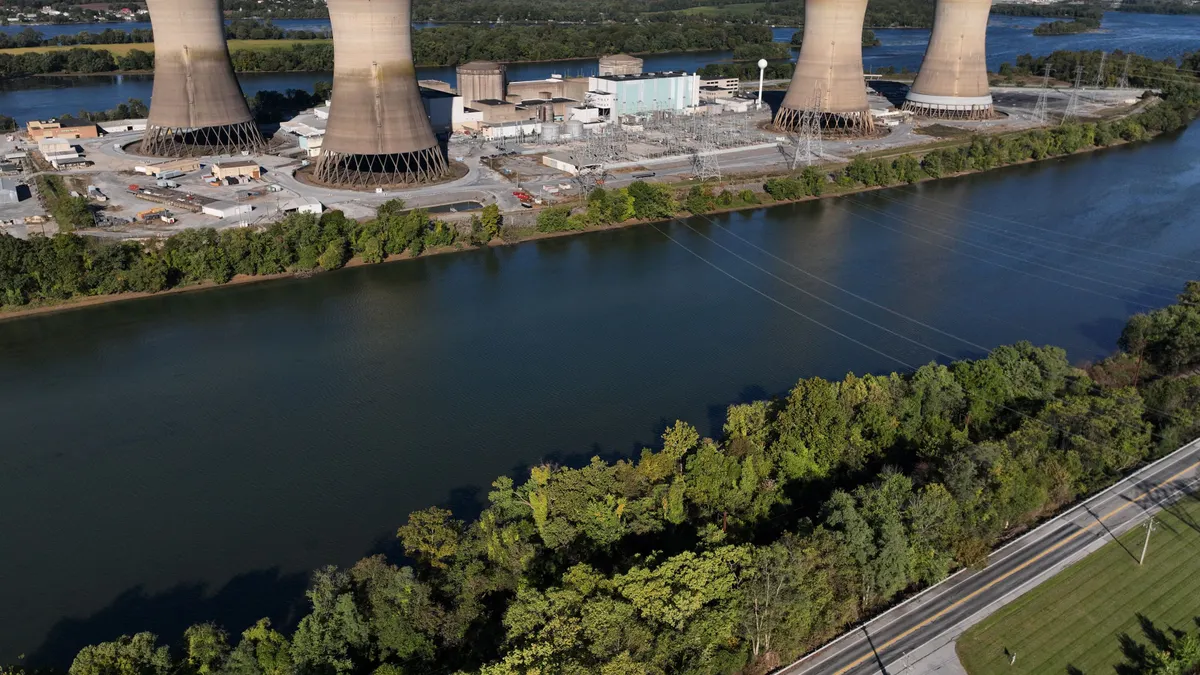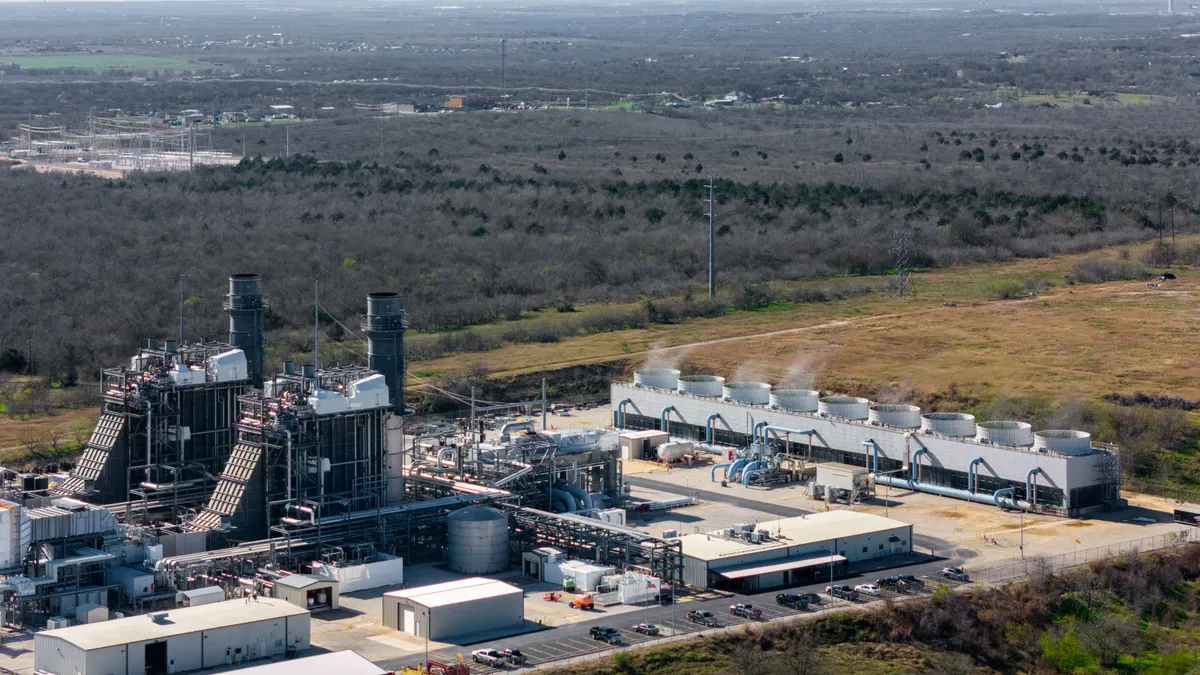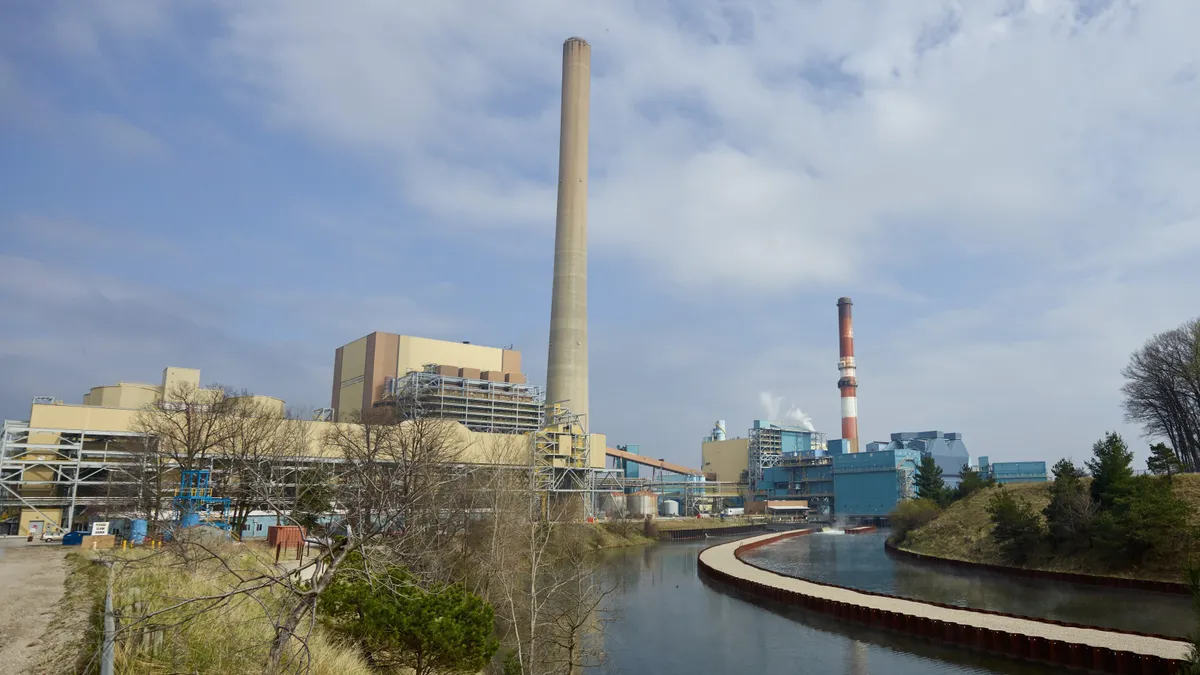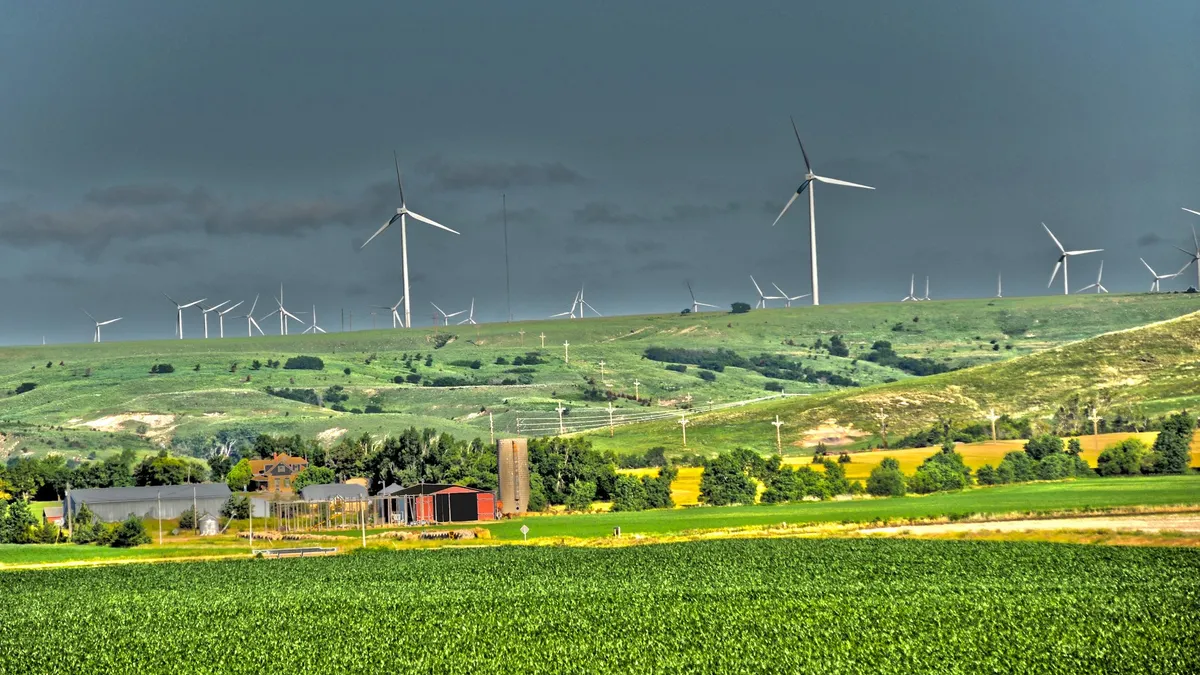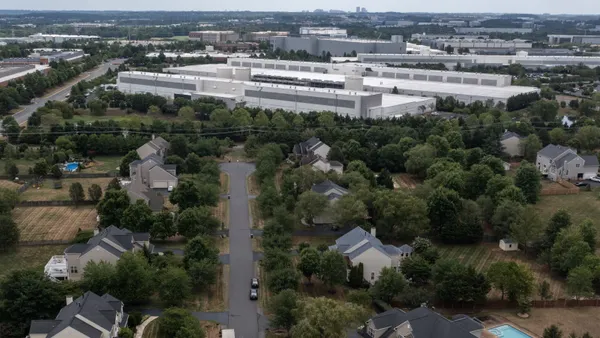Bringing data centers to support artificial intelligence online is a top priority for the Federal Energy Regulatory Commission’s newest members, Chair Laura Swett and Commissioner David LaCerte, they said Thursday at their first open meeting since being confirmed.
“In addition to our core mission of keeping the lights on for all Americans at reasonable costs, my priority as chairman is to ensure that our country can connect and power data centers as quickly and as durably as possible,” Swett said.
LaCerte echoed that sentiment.
The AI data race requires “bold action” to protect the economy and national security, he said.
“The risks of inaction or delayed action are simply too great,” he added. “I look forward to partnering with all stakeholders … to accomplish these goals.”
FERC is beginning to consider a proposal from the U.S. Department of Energy for new rules governing the interconnection of data centers and other large loads to the transmission system. State utility regulators earlier this month raised a series of concerns about the proposed rulemaking, including their role in overseeing retail power sales and the potential for data centers to impose costs on other electric retail customers. DOE asked FERC to issue a final rule by April 30.
During FERC’s open meeting, LaCerte said action on data centers must be balanced with maintaining affordable electricity.
“I know that Americans are fearful of higher energy costs due to data center construction and the cost of additional transmission and infrastructure,” LaCerte said. “It's our duty as commissioners to fully protect these people from undue costs.”
Furthermore, FERC must keep ratepayers in mind in all deliberations, according to LaCerte, who joined FERC from the U.S. Office of Personnel Management.
“There are many people in this room, [and] will be in this room during my tenure, looking to curry favor for one project or industry,” he said. “None of these people represent the ratepayer, but we do.”
Also, Lacerte said energy companies shouldn’t face “unnecessary obstacles” that hinder their efforts.
“[National Environmental Policy Act] reviews across the federal government have run off course, failed to protect the environment and often only serve to delay or derail infrastructure projects,” he said.
Swett, a former FERC staffer, said she aims to streamline FERC regulations to bolster energy infrastructure maintenance and construction.
“We are looking into cutting regulatory red tape and increasing transparency in our permitting processes, as well as other FERC processes, to incentivize investment,” she said.
During a media briefing, Swett said she values “legal durability” — the concept that regulations and agency decisions can survive scrutiny in the courts.
Also, Swett stood by FERC’s status as an independent agency.
“Everything that FERC does is independent,” Swett said.
The DOE Organization Act separated FERC from the department’s review powers, Swett said. Those limits, coupled with the Administrative Procedure Act, which requires FERC action to receive stakeholder and commissioner input, ensure the agency’s “independence is safeguarded structurally, and it will continue to be,” Swett said.
Here are four other takeaways from the open meeting.
Winter gas prices expected to jump 26%
FERC staff expect electricity use to be slightly lower this winter than last year, according to the agency’s annual winter outlook report. Peak demand, however, is expected to be 1.6% higher.
While this winter is expected to be warmer than last winter, average natural gas prices are set to rise 26% to $4.39/MMBtu from the previous winter, based on futures prices for the Henry Hub national benchmark on Nov. 4, staff said. Rising demand for natural gas, including from LNG export facilities, is contributing to higher prices at the Henry Hub in Louisiana, staff said. Natural gas fuels more than 40% of U.S. electricity, and gas prices help determine electricity prices.
The Energy Information Administration expects U.S. LNG exports will jump 18.7% to 16.3 Bcf/d on average this winter from a year ago, according to the report.
Meanwhile, drought conditions across the West are expected to cut hydroelectric power production this winter. Drought could also limit operations at power plants that use once-through cooling systems and reduce hydro output in central and southern U.S. regions, according to the report.
FERC considers ‘blanket’ LNG and hydro authorizations
FERC on Thursday launched inquiries to consider creating “blanket” authorizations for certain liquefied natural gas and hydroelectric projects. The commission currently allows pipeline operators to conduct certain activities without getting project-specific authorizations.
“We're finding ways to simplify and optimize permitting to instill confidence in the promise of building for our future,” Swett said.
Earlier this year, FERC Commissioner Lindsay See pushed for LNG blanket authorizations.
“It's the right time for us to be thinking through carefully how we can best do our job to ensure facility changes meet our statutory protections while moving forward with appropriate speed and administrative efficiency, especially as so many [LNG] facilities in our country are reaching operational stages,” See said at the open meeting.
The agency closes stagnant dockets
FERC closed four dockets involving “duty of candor” requirements; affiliate conduct standards for liquid pipelines; safe harbor policy on natural gas and electric price indices; and tariff waivers.
The long-dormant dockets have “shrouded the industry with ambiguity,” Swett said.
It’s important that FERC declutters its dockets, according to LaCerte.
“While these ideas and concepts may eventually return, they serve no good looming in purgatory for years on end,” he said.
FERC enforcement levels dip
The commission approved 11 enforcement office settlement agreements totaling $36.6 million in fiscal year 2025 compared with 12 approved agreements totaling $82 million in FY24, according to the agency’s annual enforcement report released Thursday.
The enforcement office opened 24 investigations in FY25, compared with 30 investigations opened in FY2024 and 19 investigations opened the year before, according to the report.



